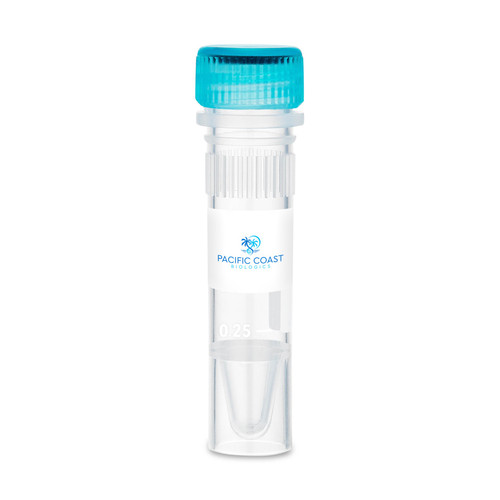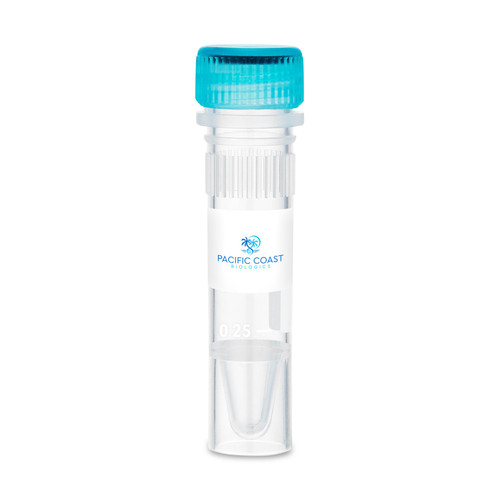GDNF is a homodimeric neurotrophic factor connected by disulfide bonds, sharing structural similarities with Artemin, Neurturin, and Persephin. These proteins are part of the cysteine-knot superfamily of growth factors, known for their stable dimeric structures. GDNF transmits signals through a complex receptor system involving RET and one of four GFRα receptors (α1-α4). Its specific actions include enhancing dopamine uptake and promoting the survival and morphological development of midbrain neurons.
In a mouse model of Parkinson's disease, GDNF has demonstrated efficacy in improving symptoms such as bradykinesia, rigidity, and postural instability. The functional form of Human GDNF is a disulfide-linked homodimer composed of two 15 kDa polypeptide chains referred to as monomers. Each monomer contains seven conserved cysteine residues, including Cys-101, essential for inter-chain disulfide bridging, and others that contribute to the cysteine-knot configuration, forming an intramolecular ring. The molecular weight of Recombinant Human GDNF is calculated to be 30.4 kDa.
|
Product Specifications
|
|
| Species | Human |
| Published species |
Human, Mouse, Non-human primate
|
| Expression System | E. coli |
| Amino acid sequence |
MSPDKQMAVL PRRERNRQAA AANPENSRGK GRRGQRGKNR GCVLTAIHLN VTDLGLGYET KEELIFRYCS GSCDAAETTY DKILKNLSRN RRLVSDKVGQ ACCRPIAFDD DLSFLDDNLV YHILRKHSAK RCGCI
|
| Molecular weight | 30.4 kDa |
| Class | Recombinant |
| Type | Protein |
| Purity |
≥ 98% by SDS-PAGE gel and HPLC analyses.
|
| Endotoxin concentration | <1 EU/µg |
| Activity |
Determined by a cell proliferation assay using SH-SY5Y cells. The expected ED50 for this is 0.02 - 0.03 ug/ml.
|
| Conjugate | Unconjugated |
| Form | Lyophilized |
| Contains |
no preservative
|
| Storage conditions | -20°C |
CAUTION
For Research Use Only. Not for use in diagnostic procedures.













